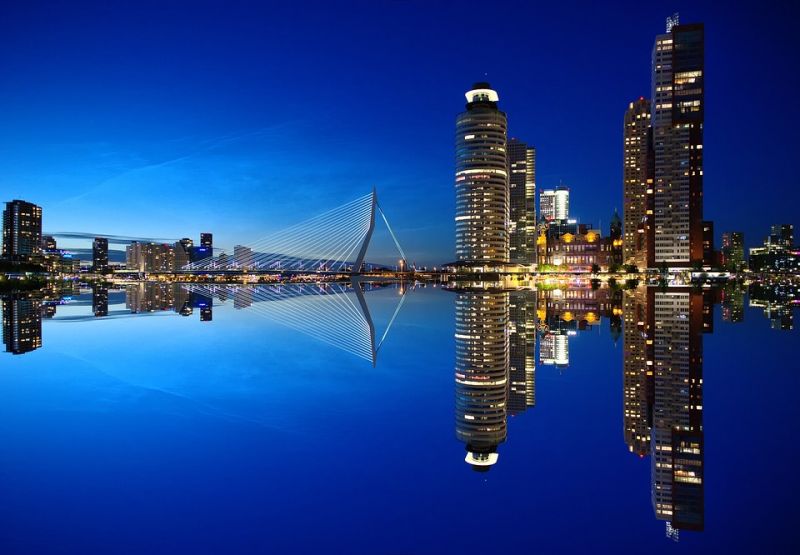The Dutch Have Solutions to Rising Seas. The World Is Watching.
Published on by Stan Bronson, President & CEO at The Institute for Climate Innovation in Government
In the waterlogged Netherlands, climate change is considered neither a hypothetical nor a drag on the economy. Instead, it’s an opportunity.

While the Trump administration withdraws from the Paris accord, the Dutch are pioneering a singular way forward.
It is, in essence, to let water in, where possible, not hope to subdue Mother Nature: to live with the water, rather than struggle to defeat it. The Dutch devise lakes, garages, parks and plazas that are a boon to daily life but also double as enormous reservoirs for when the seas and rivers spill over. You may wish to pretend that rising seas are a hoax perpetrated by scientists and a gullible news media. Or you can build barriers galore. But in the end, neither will provide adequate defense, the Dutch say.
And what holds true for managing climate change applies to the social fabric, too. Environmental and social resilience should go hand in hand, officials here believe, improving neighborhoods, spreading equity and taming water during catastrophes. Climate adaptation, if addressed head-on and properly, ought to yield a stronger, richer state.
This is the message the Dutch have been taking out into the world. Dutch consultants advising the Bangladeshi authorities about emergency shelters and evacuation routes recently helped reduce the numbers of deaths suffered in recent floods to “hundreds instead of thousands,” according to Mr. Ovink.
“That’s what we’re trying to do,” he said. “You can say we are marketing our expertise, but thousands of people die every year because of rising water, and the world is failing collectively to deal with the crisis, losing money and lives.” He ticks off the latest findings: 2016 was the warmest year on record; global sea levels rose to new highs.
He proudly shows off the new rowing course just outside Rotterdam, where the World Rowing Championships were staged last summer. The course forms part of an area called the Eendragtspolder, a 22-acre patchwork of reclaimed fields and canals — a prime example of a site built as a public amenity that collects floodwater in emergencies. It is near the lowest point in the Netherlands, about 20 feet below sea level. With its bike paths and water sports, the Eendragtspolder has become a popular retreat. Now it also serves as a reservoir for the Rotte River Basin when the nearby Rhine overflows, which, because of climate change, it’s expected to do every decade.
Interested in keeping up with climate change?
The project is among dozens in a nationwide program, years in the making, called Room for the River, which overturned centuries-old strategies of seizing territory from rivers and canals to build dams and dikes. The Netherlands effectively occupies the gutter of Europe, a lowlands bounded on one end by the North Sea, into which immense rivers like the Rhine and the Meuse flow from Germany, Belgium and France. Dutch thinking changed after floods forced hundreds of thousands to evacuate during the 1990s. The floods “were a wake-up call to give back to the rivers some of the room we had taken,” as Harold van Waveren, a senior government adviser, recently explained.
Read more: NY Times
Media
Taxonomy
- Governance
- Integrated Urban Water Management
- Urban Resource Management
- Urban Water Supply
- Water Governance
- Urban Design
1 Comment
-
Bonjour
Je pense aussi qu'ils ont raison. simplement l'homme doit s'adapter à ces changements climatiques et évoluer en fonction. C'est là où le bas blesse car comment faire changer les méthodes les habitudes le confort, etc, la loi, la norme, la réglementation, la conformité?
Hello I also think they're right. simply humans must adapt to these climate change and evolve in function. This is where the bottom lies for how to change the methods the habits the comfort, etc, the law, standard, regulation, compliance?